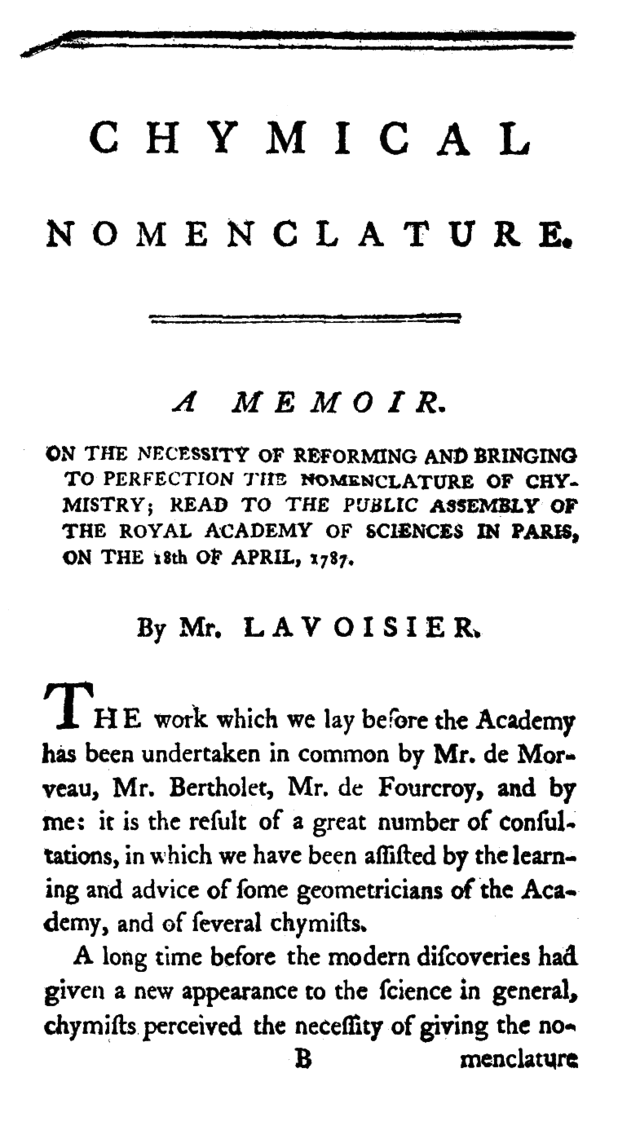set of rules to generate systematic names for chemical compounds. From Wikipedia, the free encyclopedia
A chemical nomenclature is a set of rules for creating a system of names ("nomenclature") for chemicals. This is done so that everyone uses the same name for a chemical. The system used most often around the world today is the one created and developed by the International Union of Pure and Applied Chemistry (IUPAC).

The IUPAC's rules for naming chemical compounds are written in a series of books. The system for naming organic compounds is written in the Blue Book.[1][2] The system for naming inorganic compounds is written in the Red Book.[3] A third book, called the Green Book,[4] gives recommendations about the use of symbols for physical quantities. A fourth book, the Gold Book,[5] contains the definitions of many of the technical terms used in chemistry. Similar books exist for biochemistry,[6] analytical chemistry,[7] macromolecular chemistry,[8] and clinical chemistry.[9] The books do not cover everything, however. Shorter recommendations for specific circumstances are published sometimes in the journal Pure and Applied Chemistry.
Seamless Wikipedia browsing. On steroids.
Every time you click a link to Wikipedia, Wiktionary or Wikiquote in your browser's search results, it will show the modern Wikiwand interface.
Wikiwand extension is a five stars, simple, with minimum permission required to keep your browsing private, safe and transparent.